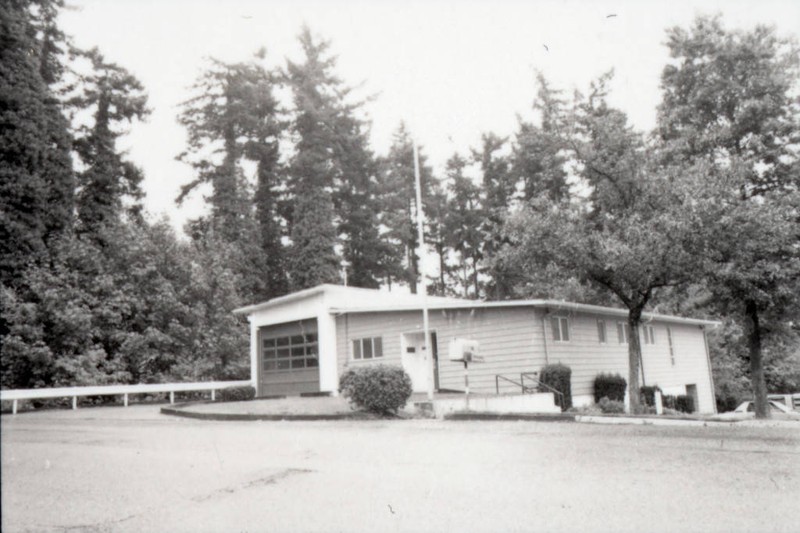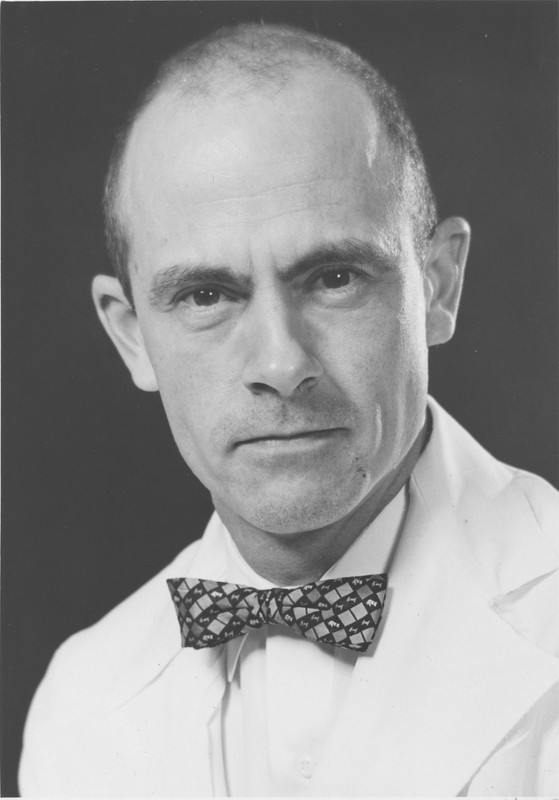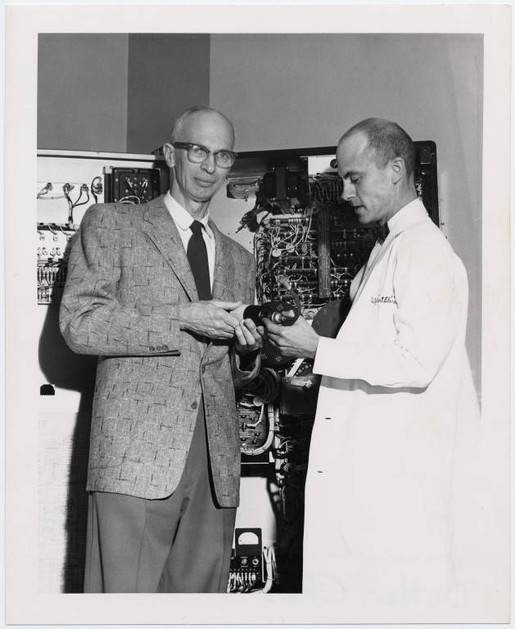Dotter Institute, OHSU
Introduction
Text-to-speech Audio
The Dotter Interventional Institute was established by the Oregon State Board of Higher Education in April 1990. Named after the radiologist often referred to as the "Father of Interventional Radiology," Charles Theodore Dotter, the Dotter Institute is an educational and research division within the OHSU School of Medicine, focusing on interventional therapy. Prior to housing the Dotter Institute, this building served as a firehouse and the Center for New Ventures.
Images
Dotter Institute building, formerly a firehouse and the Center for New Ventures, circa 1985.

Charles T. Dotter, M.D., circa 1970.

Department of Radiology staff Dr. Charles Dotter, Dr. Herbert Griswold, and Kay Smith review patient x-ray, circa 1950s.
.jpg)
M. Lowell Edwards and Charles Dotter, circa 1956.

Backstory and Context
Text-to-speech Audio
Charles Dotter (1920 - 1985) was a vascular radiologist credited with developing the field of interventional radiology. Dotter, who served as chair of OHSU’s Department of Radiology from 1952 to 1985, conceived that many ailments could be treated by accessing the body’s circulatory system. He became well-known internationally for performing the first percutaneous transluminal angioplasty in 1964. The technique that Dotter pioneered in the procedure became known as “Dottering” a patient. Dotter’s contributions to the field also include the development of the modern grid-controlled x-ray tube, flow-directed balloon catheterization, double-lumen balloon catheterization, and the safety guidewire. In 1967, the Czech radiologist Josef Rösch, M.D., accepted Dotter’s invitation to a fellowship at the University. Together, Dotter and Rösch led a team in developing new devices and procedures, such as techniques for treating arterial gastrointestinal bleeding and retrieving foreign materials from the heart and large vessels via catheter.
Dotter dreamed of establishing a center focused on advancing education and research in the field of interventional radiology, but passed away in 1985 before realizing that vision. Colleagues and friends continued that vision: Catheter manufacturing magnate William Cook donated $2 million towards the establishment of the Dotter Interventional Institute. The Oregon State Legislature was convinced to approve the creation of the institute, and in 1990 the Dotter Interventional Institute became a freestanding division within the OHSU School of Medicine, with Josef Rösch as its founding director.
Cite This Entry
Langford, Meg and Zoë Maughan on behalf of Oregon Health & Science University (OHSU) Library. "Dotter Institute, OHSU." Clio: Your Guide to History. May 20, 2022. Accessed April 9, 2025. https://theclio.com/tour/2028/20
Sources
Dotter Department of Interventional Radiology. “History.” OHSU. https://www.ohsu.edu/dotter-interventional-institute/history.
Munguia, Martin. “They All Laughed,” Oregon Health, Fall 2000. Historical Collections & Archives, OHSU Library.
OHSU Digital Collections, https://doi.org/10.6083/M44Q7SH6
OHSU Digital Collections, https://doi.org/10.6083/M4610XZR
OHSU Digital Collections, https://doi.org/10.6083/M4PG1Q9Z
OHSU Digital Collections, https://doi.org/10.6083/M4KW5DHN

